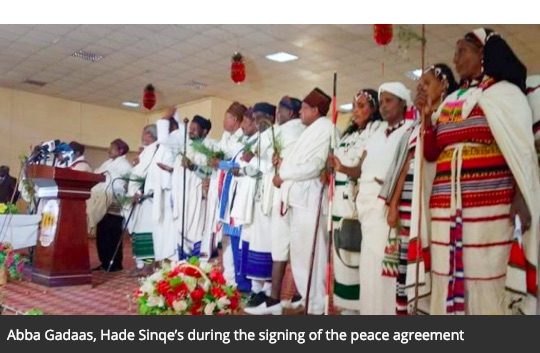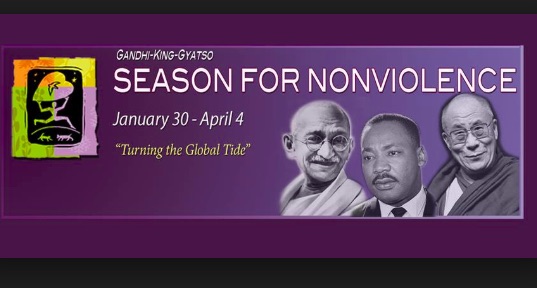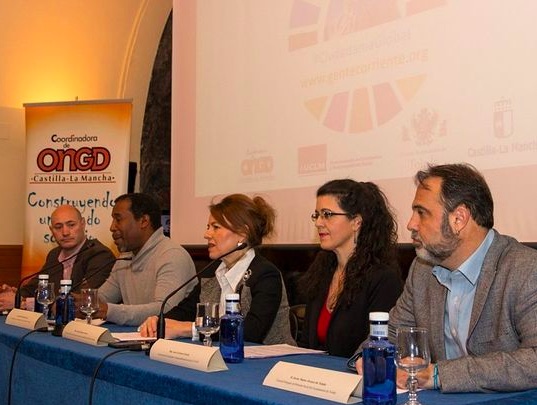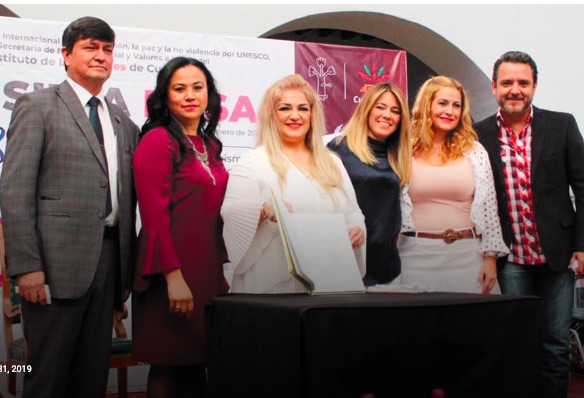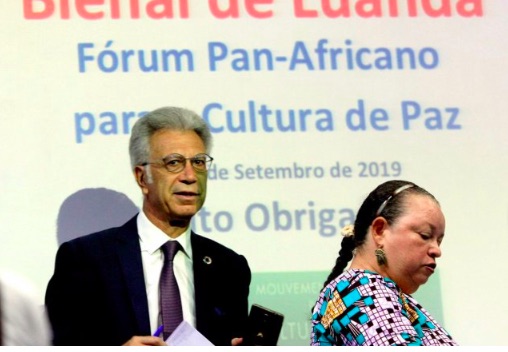… EDUCATION FOR PEACE .. .
An article by David Wick from the Ashland Daily Tidings reprinted by the Global Campaign for Peace Education
As the World Peace Flame was lit at the Thalden Pavilion on the Southern Oregon University campus on Sept. 21, Ashland was recognized internationally. A unique part of this ceremony was the role of the newly formed Flame Keepers, made up of students from Kristina Healy’s class at nearby Ashland Middle School. They volunteered to keep the World Peace Flame lit by refueling the oil lamp every Friday during the school year with 100 percent sustainable biomass lamp oil, and keeping the lamp and enclosure clean.
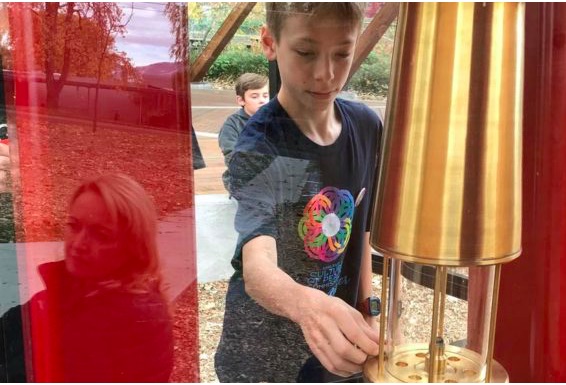
A member of the Ashland Middle School Flame Keepers group tends to the flame. (Photo: Ashland Culture of Peace Commission)
(click on photo to enlarge)
After 11 weeks of Flame Keeper experience, they were asked two questions:
Why is it important to have a World Peace Flame?
What do you like about being a Flame Keeper?
Here are their responses:
Lauren Drabik: The Peace Flame gives hope for peace and it can help change the world and make it a better place for new generations. It is a big honor and there aren’t very many in the world, and you get to be part of something so big! It’s just special to do.
Kendra Caruso: The World Peace Flame brings people together and it helps everyone know there is peace in the world. The Peace Flame represents how everyone is one in the world. I really like it because I was chosen to be handed the flame (during the Sept. 21 lighting ceremony) and I handed it off to someone else who lit the flame. That was a huge honor! I felt like I was a part of the whole celebration of the flame. I think it is really cool to have Flame Keepers because it is a huge honor and because you are doing good for the world and I believe giving back is really nice.
Samara Penn-Kout: Having a World Peace Flame, especially in our small community, is really nice because its being part of something bigger. There are only two in this country and we are helping and being the representatives in the United States and the Northern Hemisphere. We are part of something greater to share with anybody. I love being a Flame Keeper because I feel so good about my actions, it is a big responsibility, and it is really nice because it feels like we are helping peace around the world.
Tara Vivrett: It is such a reminder for people to stay peaceful where they are and it is a constant thing going that you can always look to. It feels like being included because we’re being part of it and we are keeping it going. It is also something you can tell to people around you and that feels good.
Levi Predpelski: It is a reminder every day. Every time I see it I am reminded, “oh ya, be peaceful every day and don’t forget about it.” It is being part of something bigger than myself, it is about community and it is not just about me, it’s about everyone.
(Article continued in right column)
Question related to this article:
What is the best way to teach peace to children?
(Article continued from left column)
Finley Taylor: It is important because it shows us that peace isn’t just one day of the year. It is every day. And it is always there in the background and we should focus on making the world a more peaceful place. It feels like I am doing something important that changes the world. It’s just a good feeling.
Kade Price: It is important because then we know we will have peace all around the world. I like how I can be a part of peace.
CJ McDonnald: It brings people together and it makes you feel peaceful when you are around it, then every place you go you have this going on. It is a huge responsibility and I like refueling the flame with my friends.
Cash Cota: It shows you how much you should enjoy peace and that everybody should enjoy peace and not just certain people. It also shows that our culture is very peaceful as a community and that we deserved it because we can resemble peace a lot and we can also show other people how to be peaceful around the world. I like it because it is really cool to be part of something that no one else has done at this age, and it is also fun just being with friends and enjoying peace together.
Tara Lusk: It is important to represent how peace is all around us, especially in Ashland, a small community town that has a lot of organics and very community (focused). It is nice to have the World Peace Flame represent how peaceful we are here and how we get along together. It’s really fun; I like the responsibility of it. It is a little bit stressful at times, but overall it is a really nice experience.
Madeline Bolin: It reminds us that we should be constantly trying for peace, like always not just one event. The responsibility and knowing that we are helping to achieve peace.
River Collins: Having the World Peace Flame shows triumph over hate and is a check point in our history to accomplish peace. It is fun and because people see me as a peaceful person, not angry and more peaceful. This supports the change in the world.
Kristina Healey (teacher): I think it is always wonderful to have a reminder about peace. Peace in your own mind and heart and community and all the way beyond. And to know that they are originating from the same place of peace here on our planet. I like that I was able to do it, to be the vehicle to keep it (a focus on peace) going here in Ashland. I really loved to see the kids and how they we saying, “Oh this is so much responsibility, I don’t know if I can do it,” and just to empower them that we can do it if we all work together. We check that calendar, we go over (to the World Peace Flame Monument across the street) and we go through the directions. (The students) have felt very privileged and responsible about keeping the flame going for people who come and visit the Peace Flame in Ashland. We talk about it in class and some of the kid’s families have gone over, outside of class to see what it is all about. Anything to remind kids, our school district, our city that we are not finite, we are connected, we are bigger than that. So having the Peace Flame here reminds us of the importance of the commitment to peace.
When we wonder what peace really means, go ask an eighth grader at Ashland Middle School.
Email comments and questions to ashlandcpc@gmail.com. The ACPC website is www.ashlandcpc.org; like the commission on Facebook at www.facebook.com/AshlandCultureofPeaceCommission;
follow twitter.com/AshlandPeace on Twitter. All are welcome to join the ACPC’s Talking Circle at 11 a.m. each Tuesday and Community Meeting at 4 p.m. each Wednesday, both at the ACPC office, 33 First St., Suite 1, diagonally across Lithia Way from the Ashland Post Office.
(Thank you to Janet Hudgins, the CPNN reporter for this article.)

